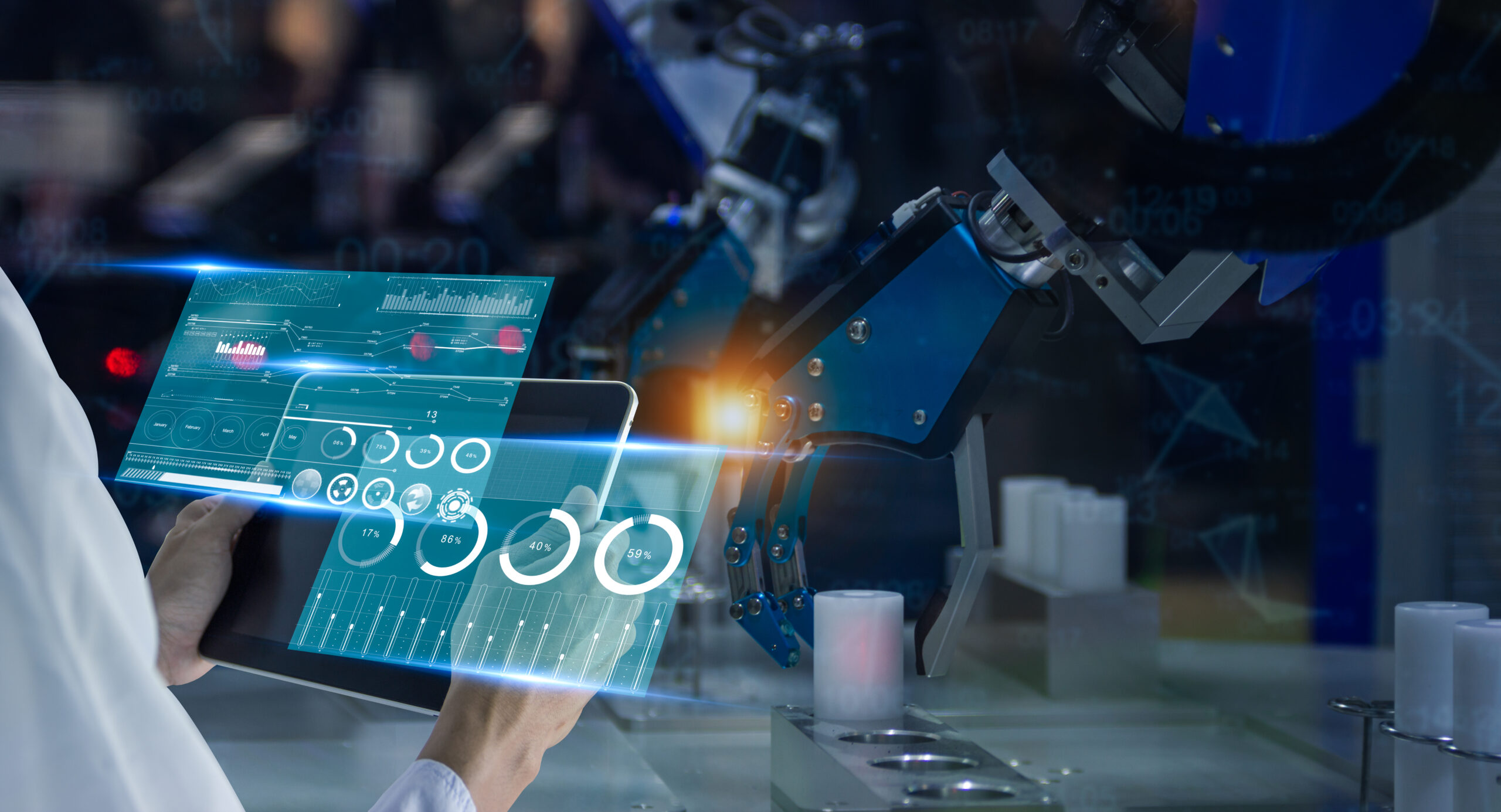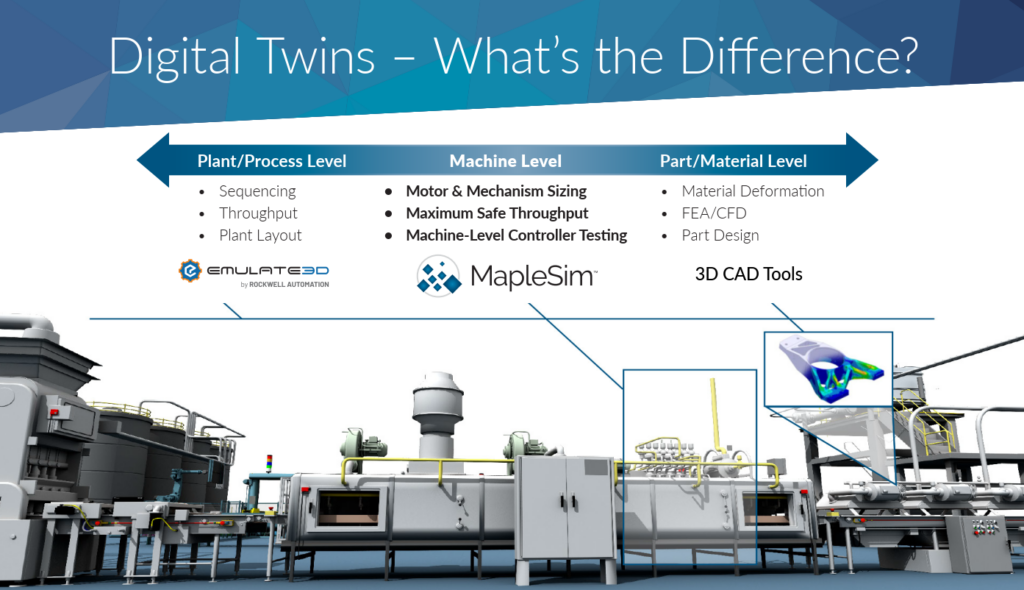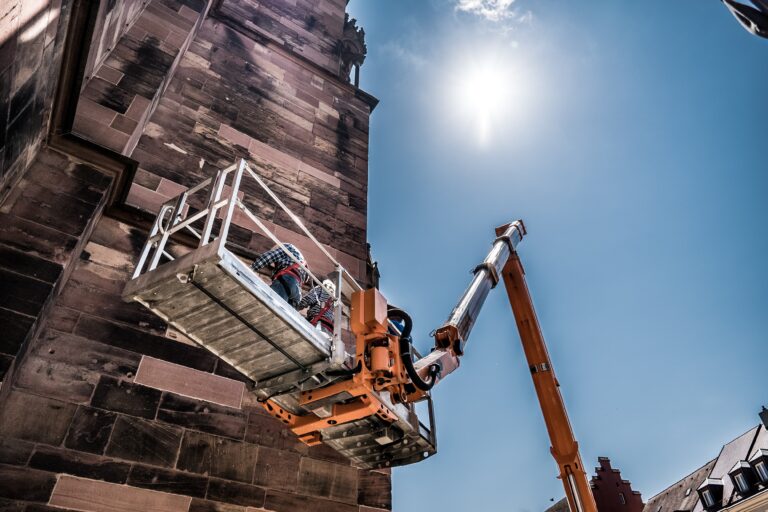
Which types of digital twins make the most sense for your project? If you were to simply search for digital twins online, you’ll soon find that there’s many different versions of the concept – from sensor-based models created after production, to physics-based models of individual machines. It’s important to know exactly the kind of digital twin that you’re looking for, in order to get the results you want from this technology.
Let’s consider these types of digital twins in the realm of simulation – that is, models created before the physical product exists. These digital twins are based on different kinds of simulation technologies, and each kind of digital twin provides insight into different areas of automation. Regardless of what kind you need, the commonality between them is their benefits – you’ll save a lot of time and money by fixing issues before burning through prototype funds. Compared to testing on the physical product itself, digital twins let you reduce prototype cycles, test your machines without risking hardware damage, and find efficiencies through the advanced insights from simulation.
Let’s take a look at 3 of the main types of digital twins.

Plant (or Process) Level Digital Twins
Take a look at the picture above and you’ll see an example of a production line. Digital twins exist to help model the performance of entire plants, and the processes that take place between each machine. These kind of digital twins tend to rely less on the detailed physics of each individual machine component, and place an emphasis on optimizing the flow of materials throughout an entire line.
You’ll want to use plant or process level digital twins for tasks such as:
- Sequencing – Finding the best configuration of plant parameters so that products are moving effectively between machine cells.
- Throughput – Optimizing process parameters to maximize the performance of a given plant.
- Plant Layout – Finding ways to physically design your plant to maximize efficiency.
Take a look at tools like Emulate3D if these kinds of digital twins are right for you.
Machine Level Digital Twins
Narrowing our scope a bit, let’s now look at digital twins on a single machine level. These digital twins use highly accurate simulation data of machine dynamics – including the behaviors of mechanical, electrical, hydraulic, and more. If you’re involved in developing new machines for production, these are the digital twins for you. They will give you a host of new abilities to fast-track your development, and keep your costs in check as performance requirements rise. Oh, and these are the digital twins you’ll need to really see the benefits of machine-level virtual commissioning.
You’ll want to use machine level digital twins for tasks like these:
- Motor & Mechanism Sizing – Using high-fidelity simulations of machine loading, you can find the exact requirements for motors and other mechanisms.
- Maximum Safe Throughput – Rather than risking physical machine damage, you can test the maximum throughput for a given machine design and duty cycle.
- Machine-Level Controller Testing – Find the best control strategies possible for your machines by testing your code against these realistic virtual models (virtual commissioning).
Take a look at tools like MapleSim if these kinds of digital twins fit with your projects.
Part (or Material) Level
Finally, we’ve got the most narrowed-in level of analysis – the individual parts of materials themselves. These kinds of digital twin simulations use material properties to run complex, resource-intensive simulations on the actual performance of individual parts, as they respond to the stresses and strains of operation. They might also aim to shed light on how certain fluid materials will behave as they are moved around or processed in different industries.
Use pat or material level digital twins for these kinds of applications:
- Material Deformation – Testing parts under various stresses to simulate their potential deformations or failures.
- FEA/CFD – Two powerful simulation technologies to simulate materials in 3-D space (Finite Element Analysis) or the behavior of fluids (Computational Fluid Dynamics)
- Part Design – Finding the optimal size, thickness, and overall design of parts to meet the requirements of the greater machine.
Take a look at FEA tools like Solidworks Simulation if these applications fit your needs.







